Grain after grain, grain by grain, the ants of a colony move soil particles to build their citadels. Sit next to an ant nest and you will sight these tiny, albeit important, inhabitants of planet Earth.
Ants are all too familiar to us. Some of us look at ants in admiration while some others are scared; some of us may look at them with disgust; some may simply be indifferent. And, for many they are no more than just a nuisance. These are the general reactions. But, how many of us take a minute to wonder where these little creatures come from? Where do they live? Do they build homes like we do? Well, you may be surprised to know that most of them do build their own homes.
Ants are social creatures. They live in colonies that consist of several individuals (mostly sterile wingless females) spread over different castes – the workers, the soldiers and the like. Besides these, the colony also has fertile females and males – the queen and the drone. The queen lays eggs while the workers cart them away and store them in special chambers meant for the purpose. Their life style often necessitates the need for a safe home – a nest. A nest that can give the ants a place to live in; a space that offers ample protection to the queen and her eggs; a secure place for the growing larvae and possibly also a place to store the waste generated by the colony.
Many ants build very complex permanent nests. Those that are constantly on the move don’t build a nest at all! The nest can be on the ground or on trees. It could simply be on the ground, around the base of a tree, under stones or fallen trees, and at times even inside the ootheca of praying mantids and several such situations!
Most familiar ant nests are those on the ground that consist of a pile of soil brought out and heaped around the entrance of the nest.
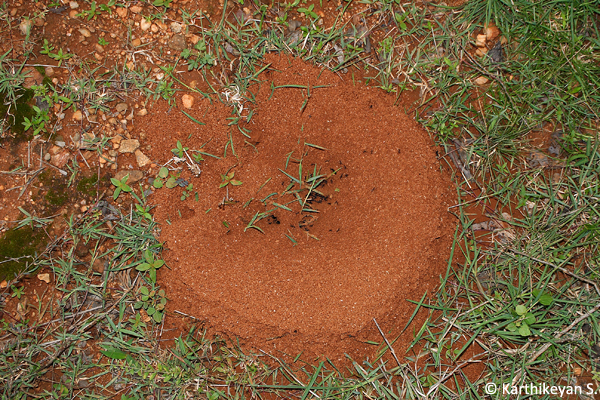
There could be more complex structures too like what the Harvester ants Pheidole sp. build. Their nest has two or more walls that keep rain water from entering the nest. At times such walls can be raised from the ground, forming a chimney like structure. These kinds of nests can be largely seen in areas with heavy rainfall.
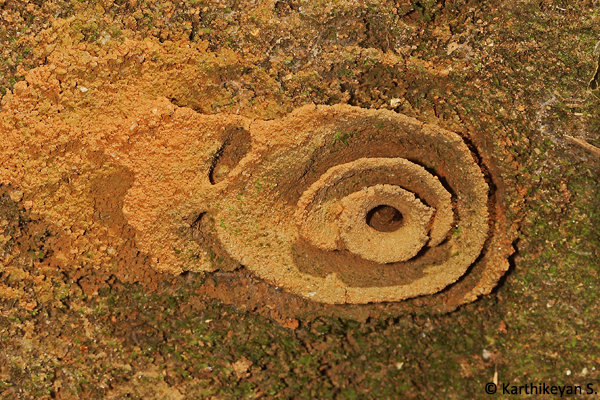
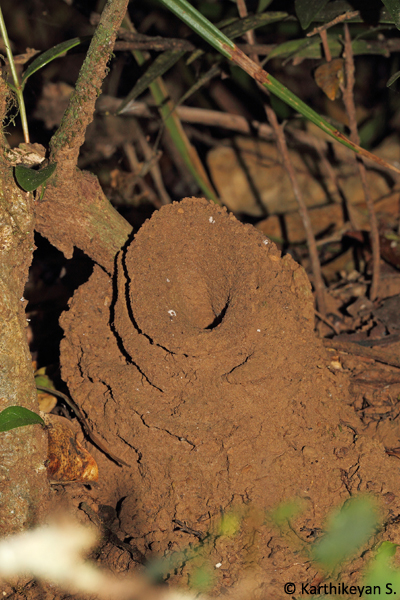
One may even encounter a pile of small dry leaves or a pile of twigs or feathers or even a combination of these. It is thought that these ants (Diacamma sp.) use the dew that may settle on this pile to meet their water requirement – water harvesting started a long time ago indeed!
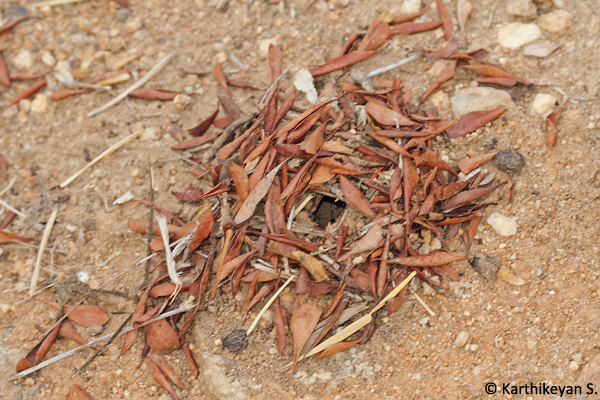
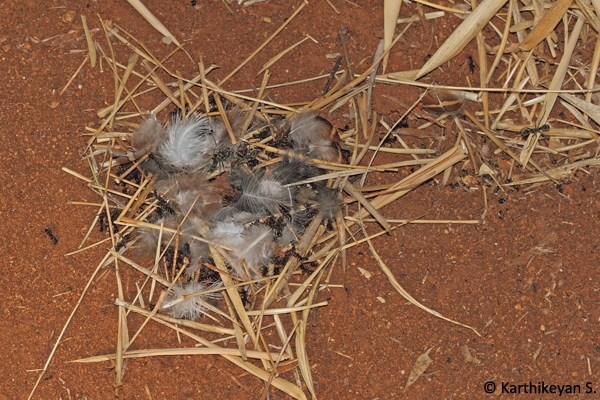
One ant – the Jumping Ant – even decorates the entrance to its nest. It may use drying leaves or petals of flowers fallen on the ground, all of the same colour. It is thought that this enhances the visibility of the nest and thereby helping the ants easily navigate back to their nests.
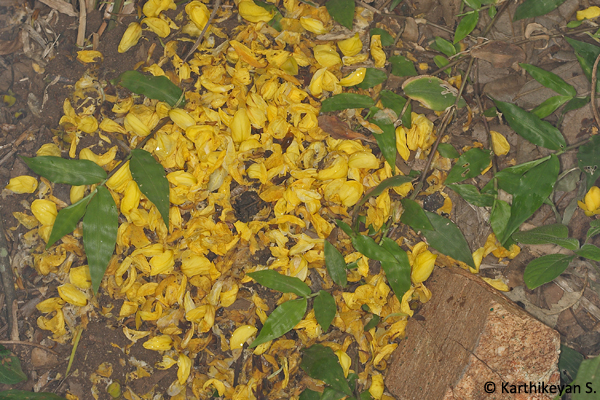
Up in the trees, different species of ants build different structures. A nest could very simply be two leaves brought together and a bit of other plant matter used to create some space between the leaves.
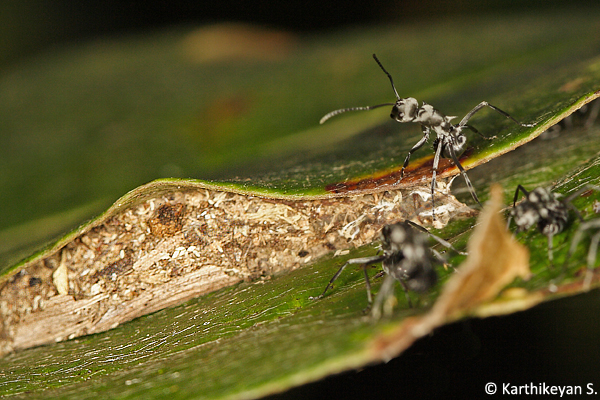
Others could be a lot more complex requiring several leaves to be brought together and held together by the silk produced by the larvae. These nests typically built by Weaver Ants Oecophylla smaragdina could be a very large structure.
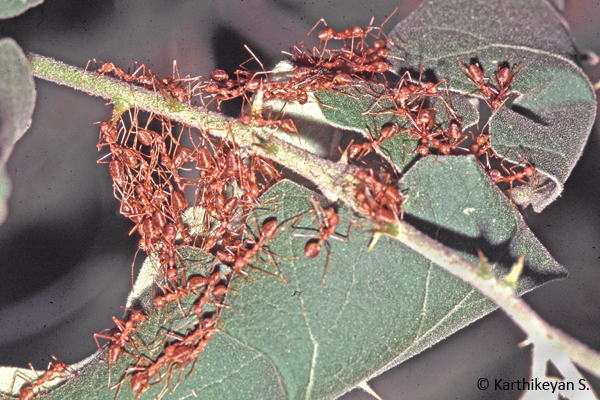
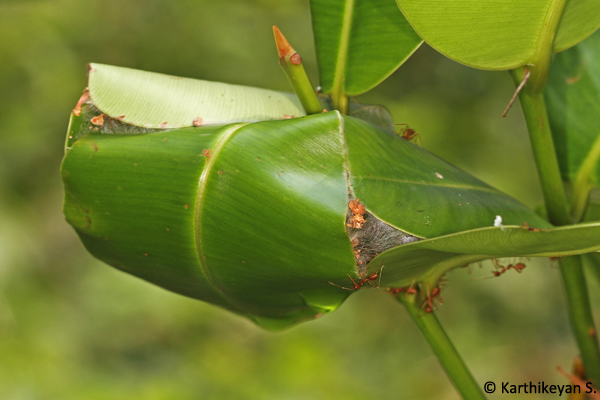
In the trees one also can see the large woody nests built by the tree ants (Crematogaster sp. and Polyrachis sp.). These are built by the ants by first chewing plant matter and then using this as the raw material for the construction of the nest itself. These nests can be seen typically situated in the fork in trees.
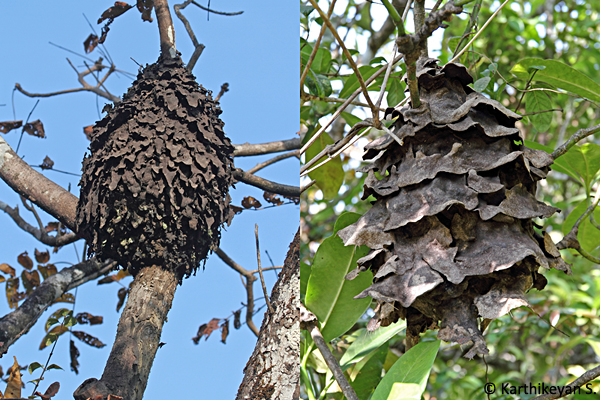
Nests of tree ants like that of Crematogaster sp. also play home to woodpeckers. The Rufous Woodpecker is known to nest within the nest of this ant!
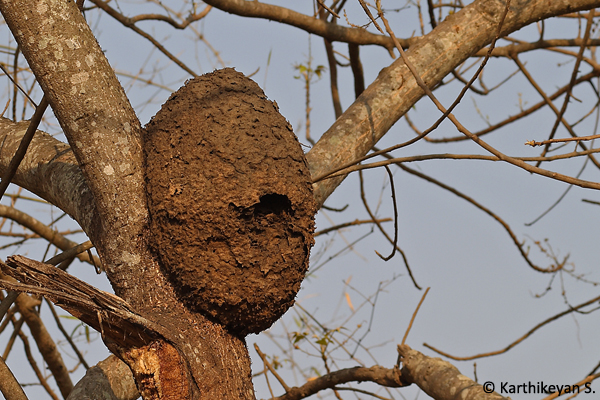
Ants are known for their industry. As you have seen, they ago about building some amazing structures that serve as their nests. Their nests can be very simple or can be complex structures; plain structures to decorated ones. These are but just a few examples. Ants build their nests in a variety of other situations too. In my own house, I’ve had ants nest in my cupboards to shelves to even jackets, sleeping bags and garden pots! All in all, ants are excellent architects. With keen observation, it may be possible to understand how ants respond to the environmental conditions and make necessary amends to the structure that they are building. Next time you see a few ants straddling along the wall or floor in your house, do follow the trail and you might discover a whole new universe of hidden intelligent beings!